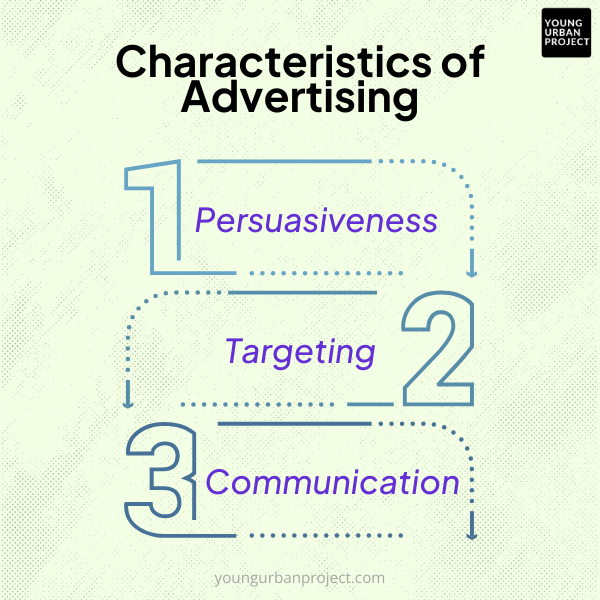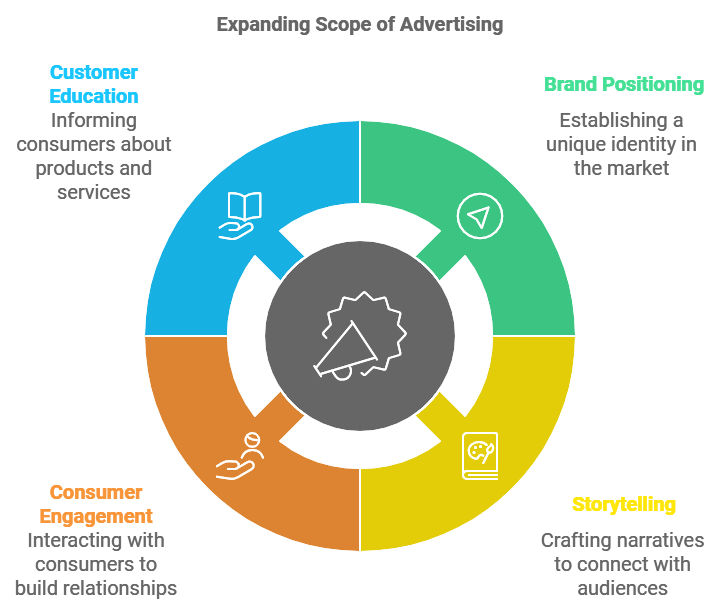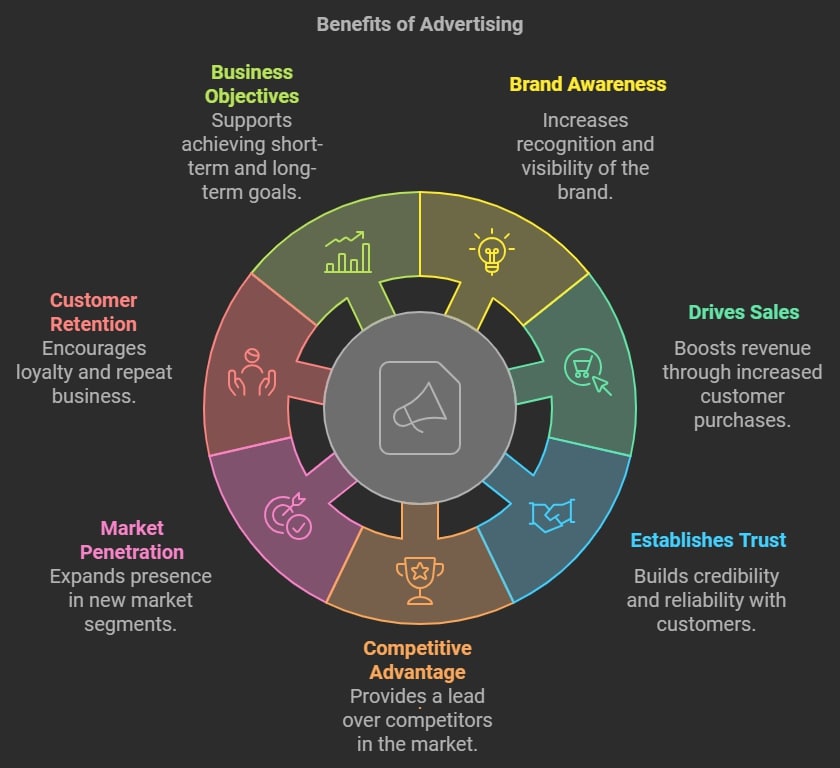Unlike a few decades back, advertising isn’t just an option anymore — it’s a necessity. With companies vying for consumer attention across a dizzying array of platforms, understanding the full scope of advertising is critical. Whether you’re a small business or a global brand, the effectiveness of your marketing strategy often hinges on how well you understand and leverage the power of advertising.
In this guide, we’ll break down the broad scope of advertising, covering its nature, types, role in business growth, consumer psychology, challenges, and emerging trends. Drawing from real-world examples and personal insights, this article aims to provide a comprehensive look at the dynamic world of advertising.
Table of Contents
Introduction to Advertising
At its core, advertising is a paid form of communication designed to inform, persuade, or remind consumers about products, services, or ideas. This communication can occur through various channels—both traditional and digital. Whether it’s a TV commercial during the Super Bowl (or IPL) or a highly targeted Facebook ad, the objective is the same: to influence consumer behavior (and eventually get them to convert into paying customers).
The Importance of Advertising in Business
In today’s hyper-competitive marketplace, advertising is indispensable. It allows businesses to:
- Build brand awareness.
- Reach new customers.
- Reinforce customer loyalty.
- Ultimately, drive sales and growth.
Take Coca-Cola, for instance. Despite being one of the most recognizable brands in the world, they continue to invest heavily in advertising, consistently staying top-of-mind for consumers. Their famous “Share a Coke” campaign personalized their advertising by printing popular names on Coke bottles, making the product feel relatable to millions of people worldwide. It was this emotional connection, driven by smart advertising, that reinvigorated sales.

Look around, and you will see behemoths like Apple, Samsung, Tesla, Tata, Domino’s and others having an immense focus on advertising.
Role of Advertising in Modern Marketing Strategies
Today, advertising isn’t just about being sales-y and pushing products — it’s about building relationships. Modern marketing strategies emphasize content-driven and customer-centric advertising, which focuses on solving the customer’s pain points and creating value before asking for a sale. This is why content marketing and native advertising have grown in importance.
Also Read: Scope of Marketing – Nature, Importance and Career Opportunities
The Nature of Advertising
When understanding the scope of Advertising, it is important to know that advertising is both art and science. It relies on creativity to craft compelling messages, but also on data to target the right audience and measure the effectiveness of campaigns. It’s a strategic tool for communication, but at the same time, it requires tactical execution across multiple channels.
Key Characteristics of Advertising

- Persuasiveness: The primary goal of advertising is to persuade the audience. Whether through emotional appeal, logical reasoning, or a combination of both, the message must push consumers toward action.
- Targeting: Advertising is all about reaching the right audience. A successful campaign doesn’t aim for a general population but is tailored to specific demographics or psychographics. For example, Nike doesn’t just market shoes—they market performance and motivation to athletes and fitness enthusiasts.
- Communication: Clear, concise messaging is vital. Brands need to convey their value proposition effectively in just a few seconds, whether through a catchy tagline, visual storytelling, or clever ad copy.
The Scope of Advertising
The scope of advertising is vast and continuously expanding. It covers multiple industries, media types, and markets—both local and global. The scope of advertising extends far beyond simple promotional tactics. It includes brand positioning, storytelling, consumer engagement, and customer education.

Advertising Across Different Media
Advertising happens across a variety of platforms, each with its strengths:
- Digital Advertising: With the rise of the internet, digital advertising (e.g., Google Ads, social media ads, influencer marketing) has become the most popular medium. It’s flexible, measurable, and allows for detailed targeting. Performance Marketing is a subset of this.
- Print Advertising: Although newspapers and magazines may seem outdated, they still offer value, especially for luxury brands like Chanel, which leverages glossy magazine spreads to connect with high-end consumers.
- Broadcast Advertising: TV and radio remain effective, particularly for building mass awareness. The Old Spice “The Man Your Man Could Smell Like” campaign took full advantage of TV ads to catapult the brand into a household name again.
- Outdoor Advertising: Billboards and transit ads offer strong visibility in high-traffic areas. McDonald’s often uses this method with their straightforward, hunger-inducing outdoor ads near busy highways.

Global vs. Local Advertising
Brands must adapt their scope of advertising strategies based on the market:
- Global Advertising: Companies like Apple run global campaigns to create a unified brand image across different regions. They can afford the investment because their products appeal to consumers worldwide.
- Local Advertising: Small businesses, on the other hand, might focus on localized ads tailored to community needs. A local bakery may run geo-targeted Facebook ads to drive foot traffic during the holiday season.
Cross-Industry Scope of Advertising
No matter the industry, advertising plays a critical role in business success:
- E-Commerce: Platforms like Amazon dominate online advertising through search-based ads, recommended products, and retargeting.
- Retail: Traditional brick-and-mortar retailers (like Japanese fashion brand Uniqlo) use a combination of digital and offline strategies to drive both foot traffic and online sales.
- Service Industries: Banks, healthcare providers, and educational institutions use advertising to promote trust and expertise.
Also Read: What is Advertising copy and its types
The Role of Advertising in Business Growth
As a part of the scope of Advertising, it introduces a brand to its target audience. Red Bull, for instance, used high-energy sports sponsorships and guerilla marketing tactics to become synonymous with extreme sports and adventure. Their advertising, focusing on lifestyle rather than product benefits, built incredible brand equity.

Generating Leads and Driving Sales
Advertising, particularly through performance marketing, can directly lead to conversions. Digital ads are highly trackable, allowing businesses to measure leads, clicks, and purchases.
Creating Competitive Advantage
Brands use advertising to differentiate themselves in crowded markets. Apple’s “Think Different” campaign highlighted the brand’s innovation and rebellious spirit, setting it apart from competitors like Microsoft.
Advertising and Customer Loyalty
Advertising also plays a role in post-purchase engagement. By continuing to advertise to existing customers—through loyalty programs, retargeting ads, or email marketing—brands can increase repeat purchases and lifetime value. Starbucks has excelled in this with their highly engaging rewards program, heavily advertised through email and mobile notifications.
Types of Advertising
Traditional Advertising
Traditional advertising methods like TV, radio, and print ads are still relevant. Despite the rise of digital media, TV remains a powerful medium for brands seeking mass reach. For example, Procter & Gamble routinely spends millions on TV ads to maintain its dominance in the household goods sector.
Digital Advertising
Digital channels—like Google, Facebook, and Instagram—allow for hyper-targeted, cost-effective advertising. Airbnb utilized social media ads to drive their global expansion by targeting both hosts and travelers with personalized, engaging content.
Native Advertising
Native ads blend seamlessly with the platform’s content, providing a less intrusive experience. BuzzFeed frequently runs sponsored posts and listicles for brands like Taco Bell, offering humorous, snackable content that feels organic to the site’s readers.

CheckOut: Advanvced Facebook Ads Course
Influence of New Technologies on The Scope of Advertising
Technologies like AI, AR/VR, and programmatic advertising are rapidly transforming the advertising landscape. Indian eyewear brand Lenskart uses Augmented Reality (AR) to let users visualize how a certain frame of glasses will look on their face before making a purchase — an innovative use of tech that merges advertising with utility.
Also Read: The Scope of Business Research
Key Objectives of Advertising
Introduction of New Products
Advertising helps launch new products by generating awareness and excitement. Tesla often uses PR stunts and viral social media campaigns, rather than traditional ads, to introduce its new electric vehicles to a tech-savvy audience.
Building Product Awareness
A consistent advertising presence keeps products top-of-mind for consumers. Geico has mastered this with their “15 minutes could save you 15% or more on car insurance” ads that have been running for over a decade, maintaining high brand recall.
Driving Consumer Action
Effective ads push consumers to take specific actions, like visiting a website or making a purchase. Ads for limited-time sales or promotions, like Amazon’s Prime Day or Flipkart’s Big Billion Days, drive urgency and compel immediate consumer action.
Also Read: Scope of Digital Marketing
Advertising and Consumer Behavior
How Advertising Influences Consumer Decision-Making
The scope of advertising also taps into the psychology of buying. Emotional appeals, such as fear, joy, or nostalgia, are frequently used in advertising to connect with consumers on a personal level. Think of Coca-Cola’s Christmas ads, which evoke warmth and happiness, driving seasonal sales.
Psychology of Advertising
Understanding how people think, feel, and make decisions is key to creating compelling ads. Nike’s “Just Do It” slogan taps into the audience’s desire for motivation and self-improvement, making it more than just an ad—it’s a movement.
Personalized Advertising for Consumer Segmentation
With the rise of AI, personalized advertising is more powerful than ever. Amazon uses data-driven ads to recommend products tailored to individual customers based on their browsing history, boosting sales and enhancing customer satisfaction.
Benefits of Advertising
Advertising is an essential business function that delivers various advantages, helping businesses grow, sustain, and maintain a competitive edge in the market. Let’s break down some of the key benefits:

1. Brand Awareness and Visibility
One of the primary benefits of advertising is increasing brand awareness. Whether you are launching a new product or expanding into a new market, advertising ensures that your target audience knows who you are and what you offer. For example, Nike’s “Just Do It” campaign cemented the brand’s identity globally, making it synonymous with athletic achievement and lifestyle.
2. Drives Sales and Revenue
Effective advertising translates into higher sales and revenue. By reaching out to potential customers at different stages of their buying journey, advertising persuades them to take action, whether it’s making a purchase or signing up for a service. For instance, Amazon Prime Day, with its massive promotional campaigns, generates billions of dollars in revenue by creating urgency and driving conversions.
3. Establishes Brand Trust and Credibility
Consistent and thoughtful advertising helps build trust and credibility. Brands like Coca-Cola have become household names not just because of their products but due to years of consistent advertising that reinforces their reliability and appeal. This is particularly important in industries like healthcare, where trust is paramount. For example, Johnson & Johnson’s baby product ads emphasize safety and reliability, helping to establish the brand as a trusted name in baby care.
4. Competitive Advantage
In saturated markets, effective advertising can give your business a significant edge over competitors. Take the rivalry between Pepsi and Coca-Cola. Both companies have consistently invested in creative and memorable advertising campaigns, vying for market share, and building brand loyalty through constant visibility.
5. Facilitates Market Penetration
For businesses expanding into new regions or demographics, advertising is critical. It helps introduce the product to new audiences and ensures that the brand message resonates across different cultural and geographic lines. Apple, for instance, has tailored its advertising strategies to appeal to diverse global markets, from Europe to Asia, ensuring a seamless market entry.
6. Customer Retention and Loyalty
Advertising doesn’t just focus on acquiring new customers; it also helps retain existing ones. By running ads that keep consumers engaged, brands can strengthen relationships and encourage repeat business. Starbucks excels at customer retention through digital ads that promote their loyalty programs, which incentivize customers to keep coming back.
7. Boosts Short-Term and Long-Term Business Objectives
Short-term advertising campaigns, such as discounts or seasonal offers, drive immediate sales, while long-term campaigns build brand recognition and loyalty. Companies like Apple use long-term branding strategies to maintain their premium status, while businesses like Amazon combine long-term brand awareness with short-term sales events like Prime Day.

Enroll Now: Performance Marketing Training
Career Scope of Advertising for Freshers & Professionals
The advertising industry is an exciting and dynamic field with a broad career scope. Whether you are a fresher entering the workforce or an experienced professional, advertising offers diverse opportunities across various roles, skill sets, and media platforms.
Career Opportunities for Freshers
Advertising is a growing industry that constantly seeks fresh talent, making it ideal for graduates. Entry-level roles typically involve working as assistants or coordinators in different departments, but there is a broad spectrum of opportunities.
- Creative Roles: If you have a flair for creativity, you can pursue roles such as copywriters, graphic designers, or junior art directors. These roles involve crafting the message and visual elements of ads, collaborating with teams to produce compelling ad campaigns.
- Account Management: As an account executive or junior account manager, you’ll act as the liaison between the client and the agency, ensuring that projects meet client needs. It’s a great role for individuals who excel in communication and project management.
- Media Buying and Planning: Media planners and buyers decide where and when ads should be placed for maximum impact. This role requires analytical skills, as you’ll use data to make decisions about which channels (TV, social media, etc.) will deliver the best ROI for a campaign.
- Digital Marketing and Performance Advertising: With the rise of digital platforms, digital marketing roles are in high demand. Freshers can start as digital marketing executives, focusing on optimizing online campaigns using data from platforms like Google Ads, Facebook Ads, and programmatic advertising platforms.
Also read: The Importance of Marketing in Business
Mid-Level and Senior Roles for Professionals
For experienced professionals, the advertising industry offers numerous leadership opportunities across creative, strategic, and operational departments.
- Creative Directors: Professionals with years of creative experience can become creative directors, overseeing the entire creative process from concept to execution. Creative directors at top agencies like Ogilvy or Wieden+Kennedy lead high-profile campaigns that shape brand identities globally.
- Marketing and Strategy Directors: If you specialize in strategy, mid-level roles like a marketing director or brand strategist focus on long-term goals, such as building brand equity or improving customer engagement. Professionals in this field work on understanding consumer behavior, competition, and market trends to craft strategies that align with business objectives.
- Media Strategy and Analytics: Professionals with a focus on data can grow into roles such as media strategists or analysts, where they guide advertising campaigns based on performance metrics and market trends. With platforms like Google Analytics and Adobe Analytics, professionals in these roles ensure campaigns are optimized for efficiency.
- Client Servicing and Business Development: Account directors and client servicing managers ensure that campaigns align with client expectations and deliver results. They also handle client relationships, leading cross-functional teams to ensure projects stay on track and on budget.
Skills Required to Succeed in Advertising
- Creativity: Whether you’re crafting a message or designing a visual, creativity is key. Innovative thinking helps brands stand out in a crowded market.
- Data Analysis: Today’s advertising is highly data-driven. Analyzing consumer data and metrics is critical to optimizing campaigns and making informed decisions about targeting and spending.
- Communication Skills: Strong communication skills are necessary for most roles in advertising, from explaining creative ideas to clients to working with internal teams.
- Adaptability: The advertising landscape changes rapidly, especially with evolving digital trends. Professionals must stay on top of emerging platforms, technologies, and consumer behaviors.
Industries That Offer Advertising Careers
- Ad Agencies: Working in an ad agency allows you to work with multiple clients and across various industries, providing a broad range of experiences.
- Corporates: Many large corporations have in-house advertising teams responsible for their marketing and advertising strategies.
- Media Houses: TV, radio, and digital media companies hire advertising professionals to work on campaigns for their networks or platforms.
Growth Prospects
The Advertising market worldwide is projected to grow by 4.81% (2024-2029) resulting in a market volume of US$1362.00bn in 2029. That is a massive opportunity for anyone wanting to build a career in this space.

